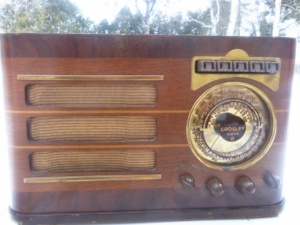
This is the Crosley Super 8…model 818 which I purchased from fellow collector and friend, Ed Ripley, several years ago. I completed a full restoration awhile ago which included replacing the power transformer. Fortunately, I had an exact replacement. This is an 8-tube 3-band radio which covers the frequencies 540 kc – 22 mc. The radio was manufactured by the Crosley Radio Corporation of Cincinnati c. 1938.
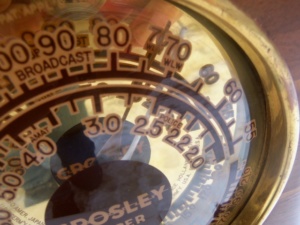
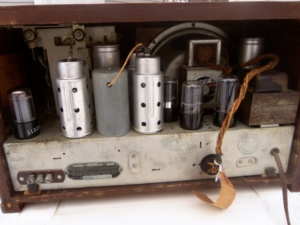

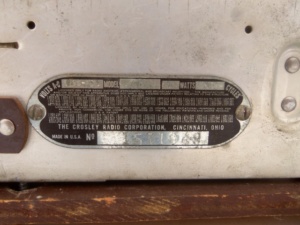
The dial (top-left) of the Crosley Super 8 is unique. It is glass with frequencies of the three bands is stenciled on the rear of the dial. The high-gloss brass plate behind the dial glass reflects the frequencies of the three bands and the countries with stations tunable across the high-frequency (HF) band. The airplane propeller dial pointer is set on AM 700. Notice that AM 700 is designated on the dial, WLW, the 50 kw Cincinnati radio station owned for many years by the Crosley Corporation. Most Crosleys of this vintage “advertised” the Crosley WLW property. The (top-right) pic shows the 8-tube chassis as it is installed in the cabinet. The speaker was made by UTAH of Chicago well-known for excellent reproduction. The solid wood cabinet (bottom-left) is in exceptional condition for its age. All veneer is intact. The case is solid, and the tenite knobs maintain original shape. Tenite escutshons and controls of this vintage had a tendency to warp. The metal tag (bottom-right) attached to the chassis give all pertinent information regarding the Crosley model 818 Super 8.
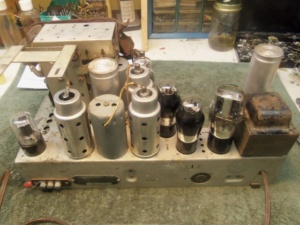
The chassis of the Super 8 is interesting. Notice the power transformer. This was defective when I received the radio, and fortunately I had a direct replacement physically and electrically. This radio utilizes a separate 6K6 oscillator tube (rear far left). Several attempts doing a precise alignment proved fruitless as the oscillator would not pass frequencies below 600 kc. A 6V6 is a direct replacement for a 6K6 but used in higher output circuits so I subbed it for the 6K6 factory-recommended oscillator tube. The result, with minor tuning was that the radio passed frequencies from 22 mc to 540 kc. It remains a mystery why the 6K6 would not function 100 % in the circuit as the oscillator application. My conclusion was that the RF oscillator coil inductance may have changed with age. The radio performs beautifully with fine selectivity, sensitivity and volume across all three bands so best left alone.
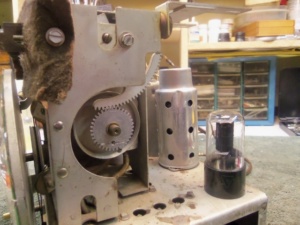
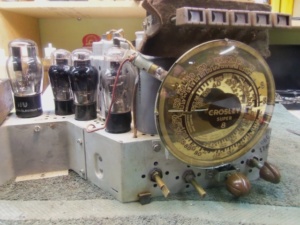
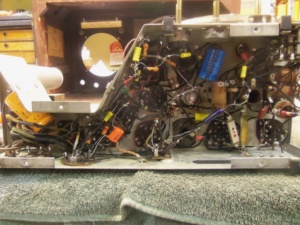
The unique gearing (top-left) aids in easy and accurate split-second tuning especially useful when tuning across the medium and short-wave bands. (Top-right) shows the chassis front. The chassis (bottom view) was completely rebuilt including a full-re-cap, resistors replaced as needed, controls cleaned and complete alignment.